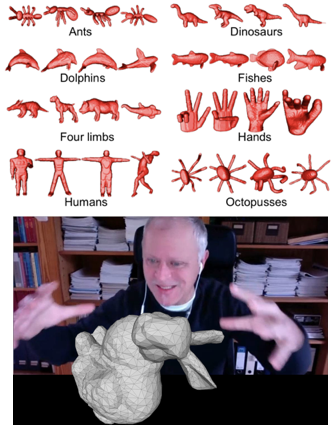Multimedia Retrieval

Multimedia retrieval consists of the theory, techniques, and tools that enable end users to search content of interest in large data collections consisting of (hyper)text, images, videos, audio, and 2D and 3D shapes. Multimedia retrieval is present in many daily applications, such as
- searching the web for pages that contain a specific phrase
- searching for images related to a given topic in the world wide web
- finding images and 2D and 3D shapes similar to a given model
- finding songs that match a given (hummed) melody or rhythm
Besides these, multimedia retrieval is also present in more specialized contexts such as
- surveillance: finding frames in which the faces of given suspects is found
- medical science: finding X-ray or CT scans that contain a given anatomic pattern
- computer-aided design: finding parts that fit a given assembly
Of course, we cannot realistically cover all these domains and applications in one course. So, we will focus on a single case: How to retrieve 3D shapes from a shape collection. The principles, techniques, and largely software this course teaches are, however, the same for any multimedia retrieval task for other data types.
Course aims
The aim of this course is to provide an in-depth coverage of multimedia retrieval (MR) techniques. The course covers the following learning aims:
- the MR operational pipeline: how MR works
- data representation: how MR data is stored and manipulated
- perception: how humans assimilate (perceive) MR data
- feature extraction: how MR data is reduced to simple mathematical descriptors
- matching: how to compare MR data using feature descriptors
- evaluation: how to measure the quality of an MR system
- scalability: how to deal with large MR databases
- presentation: how to visually explore MR databases
Course audience
The targeted audience includes students and (young) researchers interested in designing, implementing, and optimizing MR systems. The students taking this course should have a background in
- calculus, linear algebra, and statistics (differentiation, integration, matrix/vector operations, first-order differential equations, histograms/distributions)
- computer science (general data structures and algorithms). Programming skills in a mainstream programming language (e.g. C, C++, Java, Python) are very important
- computer graphics or shape modeling (meshes, normals, 3D transformations, basic 3D rendering).
Course details
See the sidebar for links to the course slides, assignment, grading, and additional material.